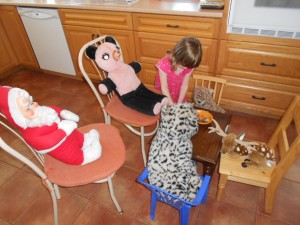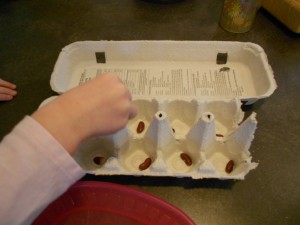Parents and caregivers often ask what young children need to know before kindergarten; this is the 20th in a series of blog posts on kindergarten readiness and early learning basics. No matter the age of your little one, this will give you a general picture of what to do as your child’s very first teacher.
Because play is such a powerful learning activity, playing with numbers and other math concepts is a great way to build some kindergarten readiness in math.
 One of the basic ideas for number sense — each number belongs to one thing — seems obvious to us, but children’s brains do not come with this connection. In order for kids to learn one thing for one number they need lots of different kinds of experiences.
One of the basic ideas for number sense — each number belongs to one thing — seems obvious to us, but children’s brains do not come with this connection. In order for kids to learn one thing for one number they need lots of different kinds of experiences.
To help children develop one-to-one correspondence use whatever is at hand. One toy car fits in one parking space on a car mat. Each doll needs one blanket. Every zoo animal needs it’s own cage. Pretending restaurant, each stuffie-guest needs a chair for it’s very own-self. Kids will often do this on their own as they play independently.
 Other every-day, ordinary activities could include making sure each person at the table has a plate. An empty egg carton was just right for “helping” make soup with 1 bean in 1 space. When getting your little one ready in the morning, you can ask if each foot has a sock. Wouldn’t it be funny to have 2 socks on 1 foot and no socks on the other one? Two feet do not fit in one shoe! Getting gloves on is really tricky but a perfect example of the math idea of one real finger in one glove finger.
Other every-day, ordinary activities could include making sure each person at the table has a plate. An empty egg carton was just right for “helping” make soup with 1 bean in 1 space. When getting your little one ready in the morning, you can ask if each foot has a sock. Wouldn’t it be funny to have 2 socks on 1 foot and no socks on the other one? Two feet do not fit in one shoe! Getting gloves on is really tricky but a perfect example of the math idea of one real finger in one glove finger.
The idea of “oneness” is necessary for learning to count. Are there some ways that you and your child can have fun with one-to-one matching today?
